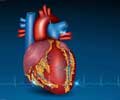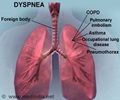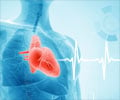- Sick Sinus Syndrome - (https://www.hrsonline.org/Patient-Resources/Heart-Diseases-Disorders/Sick-Sinus-Syndrome)
- Sick Sinus Syndrome: A Review - (https://www.aafp.org/afp/2013/0515/p691.html)
- What is Sick Sinus Syndrome? - (http://www.texasheart.org/HIC/Topics/Cond/sicksinus.cfm)
- About Sick sinus syndrome - (https://ghr.nlm.nih.gov/condition/sick-sinus-syndrome)
What is Sick Sinus Syndrome (SSS)?
Sick sinus syndrome is not a disease condition but a clinical syndrome that is related to the sinoatrial node (SA node). It is also referred to as sinus node disease or sinus node dysfunction. The sinoatrial or sinus node is a group of specialized cells in the right upper chamber (atrium) of the heart that produces electric signals which regulate pace and rhythm of the heartbeat. The sinoatrial node is thus the natural pacemaker of the heart.
In sick sinus syndrome, these signals do not follow a steady pace and the normal rhythm of the heart is disturbed.
What are the Causes of Sick Sinus Syndrome?
The cause of Sick Sinus syndrome is classified into intrinsic factors; which are integral of the organ, (heart in this case) and extrinsic causes; which are external factors that mimic or exacerbate sick sinus syndrome.
Intrinsic causes include:
- Degenerative fibrosis of the SA node (the most common cause)
- Ion channel dysfunction
- Sino atrial node remodeling
- Infiltrative disease process like:
- Amyloidosis
- Connective tissue disease
- Haemochromatosis
- Sarcoidosis
- Cardiomyopathy – ischemia, myocardial infarction, rheumatic heart disease, myocarditis, arteritis
- Muscular dystrophy, Friedreich’s ataxia
Extrinsic causes include:
- Increased vagal tone – during sleep and in athletes
- Dysfunction of autonomic nervous symptom which controls body functions that occur without our thinking(breathing, regulation of blood pressure):
- Carotid sinus dysfunction
- Neuro-cardiogenic syncope
- Vaso vagal syncope
- Metabolic disturbances (like hypokalemia, hyperkalemia, hypocalcemia, hypothyroidism)
- Drug induced – beta blockers, antiarrhythmic agents, calcium channel blockers, digoxin, sympatholytics
- Septic shock
What are the Symptoms and Signs of Sick Sinus Syndrome?
The signs and symptoms of Sick Sinus syndrome are mostly seen in the age group of 50 years and above, in children it may be seen following an open heart surgery. It is a progressive condition. Patients are often asymptomatic early in the disease but in advanced stages they will show symptoms due to decreased blood flow to the major organs also called end organ hypoperfusion.
Symptoms that are often seen in sick sinus syndrome include:
- General symptoms: Fatigue, syncope or fainting spells, lightheadedness, confusion, muscle aches, disturbed sleep
- Cardiovascular symptoms: Shortness of breath, palpitations, chest pain
- Alternating slow heart rate (bradycardia) and increased heart rate (tachycardia) or tachybrady syndrome seen in approximately half the patients
- Vague gastrointestinal symptoms
- Flushing of the face
- Oliguria
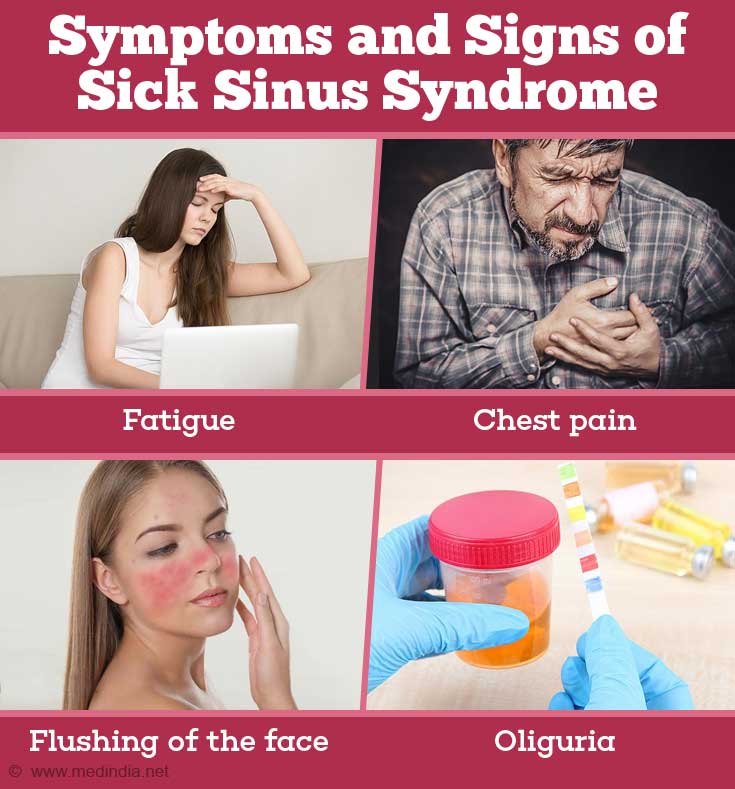
What are the Various Types of Arrhythmias Seen in Sick Sinus Syndrome?
Sick sinus syndrome is associated with both bradyarrhythmias and tachyarrhythmias. These include:
- Atrial bradyarrhythmias – Sinus bradycardia, sinus arrest, atrial fibrillation with delayed ventricular response, Mobitz Type I and II block
- Atrial tachyarrhythmias – atrial tachycardia, atrial flutter, atrial fibrillation, paroxysmal supraventricular tachycardia
- Ventricular escape (tachycardia)
- Alternating bradycardia and tachycardia - (tachy brady syndrome)
How do you Diagnose Sick Sinus Syndrome?
The diagnosis of Sick Sinus Syndrome requires looking into the symptoms that correlate with end organ hypoperfusion associated with bradycardia and or tachycardia. Diagnostic test that might be required include
Tests to check heart rhythm and determine the type of arrhythmia
- An electrocardiogram (ECG) is a requirement to confirm the diagnosis.
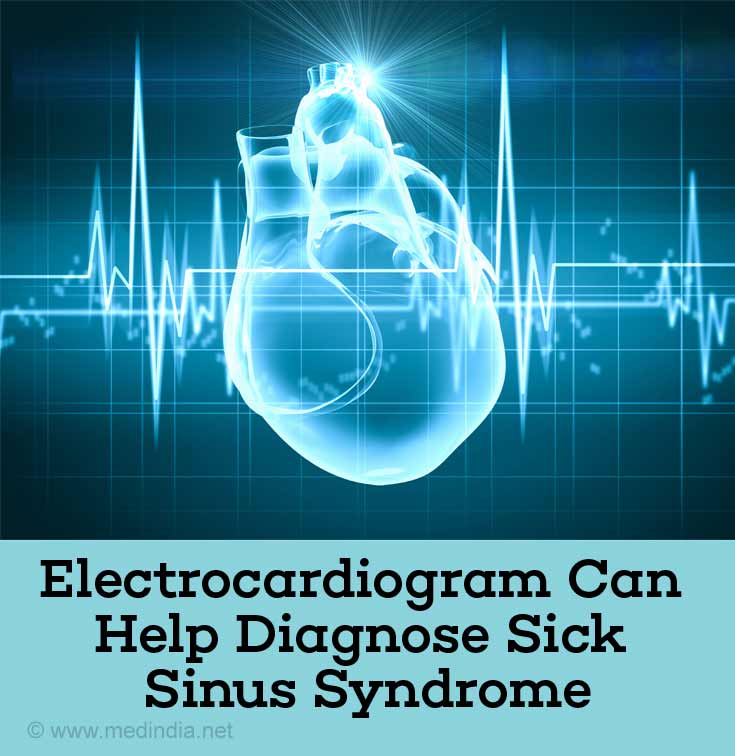
- In some cases where the ECG cannot confirm the diagnosis a 24 to 48 hour cardiac monitoring may be required in the hospital or using an ambulatory cardiac monitoring device like the Holter monitor to check if arrhythmias are associated with other symptoms.
- Event recorder – The portable ECG recording device can be carried in the pocket or strapped to a belt. The person pushes a button with the onset of symptoms and the ECG is then recorded. This can be done for up to a month. The cardiologist will analyze the ECG changes seen with onset of symptoms to pinpoint the type of arrhythmia
- Implantable loop recorder – the ECG recording device is implanted under the skin of the chest and can either continuously record the ECG or be manually triggered during onset of symptoms. It can be worn for several weeks to months.
Electrophysiological studies are done in cardiac catheterization laboratories. This helps in identifying the type of arrhythmia. They are rarely done to check for sinus node dysfunction and other electrical properties of the heart
Blood tests – renal function tests, thyroid function tests, electrolytes, serum drug levels (eg digoxin)
How do you Treat Sick Sinus Syndrome?
Treatment modalities depend on the symptoms of the patient and the type of arrhythmia
- In conditions where there are no symptoms, no medications are required.
- When symptoms are present then restrictions may be required on medications the person takes regularly such as beta blockers and calcium channel blockers and food that worsen the symptoms
- When there is a slow heart rate/bradycardia, a pacemaker will be required with anti-arrhythmic medication. A pacemaker helps in relieving symptoms and improving the quality of life. The pacemaker may be either a single chamber (paces only the atrium) or dual chamber (paces both atrium and ventricle)
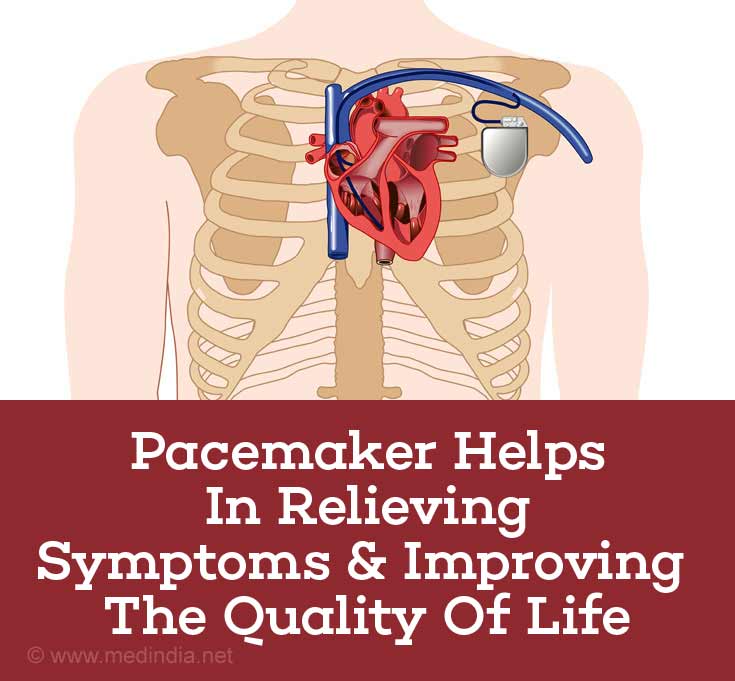
- When there is a fast heartbeat/tachycardia, antiarrhythmic medication may be required along with pacemaker
- Anticoagulation is required in patients with atrial fibrillation to reduce stroke risk
- Radiofrequency ablation of AV node or tissue that triggers the arrhythmia is another procedure used in treatment of tachycardia
Health Tips
These are certain measures that can help in preventing Arrhythmia:
- Make health food choices, including more of fresh fruits and vegetables and reducing food items that have low nutritive value, empty calories and high transfat content.
- Avoid if possible or limit the use of caffeine, alcohol and drugs.
- Limit or stop smoking and also avoid passive smoking.
- Take up a daily physical exercise and stay committed to the activity.
- Take up yearly physical exams and consult a physician if you experience any unusual symptoms.



